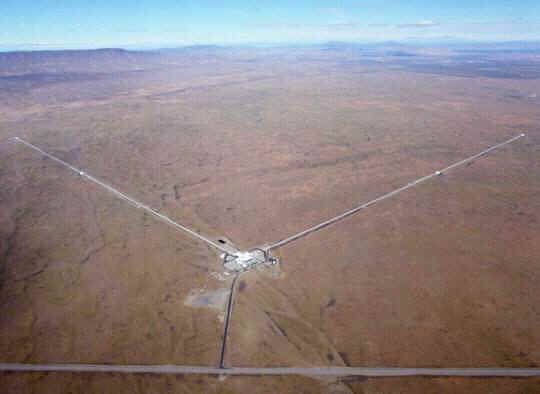A)
Four ways of detecting black holes.
Black
holes are invisible, no light can escape from black holes.
So
how do we know that they really exist?
There
is no way to see them directly with the naked eye. But scientists have observed
strange movements of stars in certain
areas. So they have supposed that there is something invisible present there
that interacts with the other stars.
Even
if we can’t see black holes directly we can deduce their presence by observing
other stars. Scientists have found
4 clues leading them to think that black holes do exist.
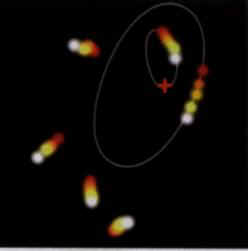 1°)
The higher velocity of stars around black holes.
1°)
The higher velocity of stars around black holes.
Following the paths of 6 different stars over a period of 4 years (from 1995 “white points” to 1999 “red points”), two scientists, Andrea Ghez and John Kormendy, confirmed that there is a galactic black hole in the center of our Milky Way (red cross).
Attracted
by the black hole, some stars go around it as fast as 1,500km/s and can’t stop
accelerating.
 The
core of many galaxies appears to be very bright, emitting very powerful X-rays,
because as matter falls into a black hole, it gets extremely hot.
The
core of many galaxies appears to be very bright, emitting very powerful X-rays,
because as matter falls into a black hole, it gets extremely hot.
On this picture of the Centaurus A galaxy taken by Chandra (a satellite
able to detect the presence of X-rays), the source from were we can see a stream
of light is likely to be a black hole. All around, white spots are probably
smaller black holes.
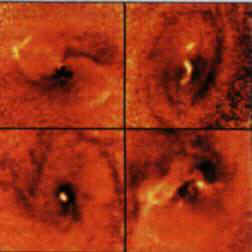 3°)
The presence of masses of gas and dust around the black hole.
3°)
The presence of masses of gas and dust around the black hole.
Huge
maelstroms of star dust appear in the center of galaxies.
Their diameter can be as large as several thousand light years . Here
they are observed by the infra-red detectors of Hubble, the space telescope.
4°)
The emission of Plasma jets.
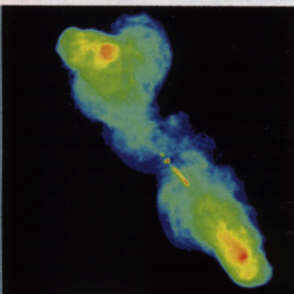 Many
distant galaxies just like this one can be “seen” (thanks to radio
radiation) to emit two huge jets projected in opposite directions. These plasma
jets, which travel as fast as the speed of light on very long distances, do not
exist anywhere in the universe, except where there are other signs of the
presence of black holes (see previous signs).
Many
distant galaxies just like this one can be “seen” (thanks to radio
radiation) to emit two huge jets projected in opposite directions. These plasma
jets, which travel as fast as the speed of light on very long distances, do not
exist anywhere in the universe, except where there are other signs of the
presence of black holes (see previous signs).
B)
New technologies will make it possible to dispel all doubts on the existence of
black holes.
Nowadays, astronomy is mostly doing research on black holes, because it is a strange and rather mysterious phenomenon. The discoveries of scientists are enthusiastic over new black hole, so they need to have new technology, which could allow them to find them.
Indeed, there is a new project in Europe, which will be able to find
these mysterious black holes. Its name is VIRGO and it is an interferometric
gravitational wave detector. Virgo results from the collaboration between
Italian and French research teams and its construction started recently at
Cascina, near Pisa on the Arno plain.
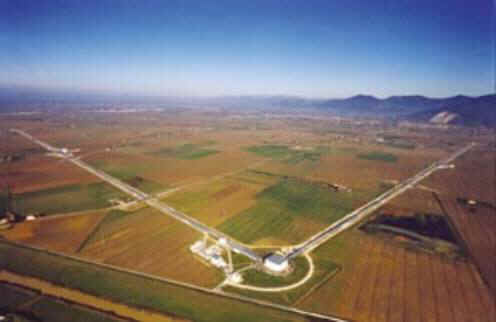
It will be make of two orthogonal arms, with ultra high vacuum, being
each 3 kilometres long with huge perfect mirrors located at the ends of the
arms.
Multiple reflections between mirrors extend the effective optical length of each
arm up to 120 kilometers. The frequency range of Virgo extends from 10 to 6,000
Hz. This range, as well as its expected very high sensitivity, should allow
detection of gravitational radiation produced by the supernova and coalescence
of binary systems in the milky way and in outer galaxies, for instance from the
Virgo cluster. In order to reach the extreme sensitivity required, the whole
interferometer should attain optical perfection and be completely isolated from
the rest of the world in order to be only sensitive to gravitational waves.
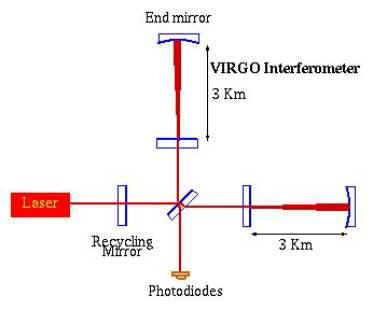
To
achieve it, Italian and French scientists involved in the project, are
developing the most advanced techniques in the field of high power ultra stable
lasers, high reflectivity mirrors, seismic isolation and position and alignment
control. In the field of optics, VIRGO uses a new generation of ultra stable
lasers, and the most stable oscillator ever built. A specific optical coating
facility has been built to produce extremely high quality mirrors combining the
highest reflectivity (over 99,999 %), with the highest surface quality ( over
1/100°). To avoid spurious motions of the optical components due to seismic
noise, each one of them is isolated by a 10m high, very elaborate system of
compound pendulums. Because the presence of residual gas would slightly disturb
the measurements the light beam must propagate under ultra high vacuum. The two
tubes, 3km long and 1.2m diameter each will actually be one of the largest ultra
high vacuum vessels in the world.
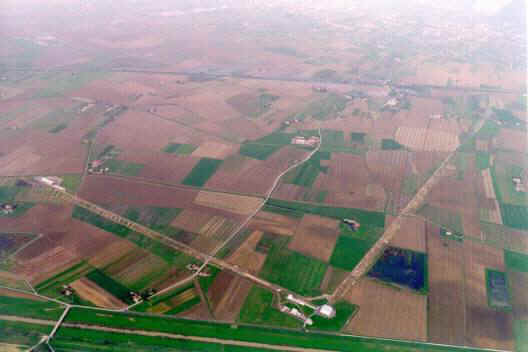
The
environment of the VIRGO interferometer once completed, will be quieter than
that of a spacecraft orbiting the earth. VIRGO will run day and night listening
to all gravitational signals that may arrive at any time and coming from any
part of the Universe. The signals will be detected, recorded and pre-analysed
through an on-line computing system. These data will then be made available to
the scientific community for further analysis. VIRGO will be an enormous
progress in the search of black holes.
Scientists are certain VIRGO will give an incontestable proof of the existence of black holes, but Virgo is not alone in the discovery of the Universe.
Indeed
there are two similar detectors called LIGO, the first is installed in
Livingston, Louisiana, and the second in Hanford in the state of Washington. The
two LIGO detectors were built in 1997, and are composed of six lasers, which are
4 kilometers long. These lasers measure the brightness of the light, and if a
gravitational wave is emitted from a star and if this wave crosses the detector,
the compression or the expansion of the interferometer laser will cause a
modification in the intensity of light. That is why LIGO can detect
gravitational waves emitted by a star, the explosion of a supernova or by the
collision of two black holes.
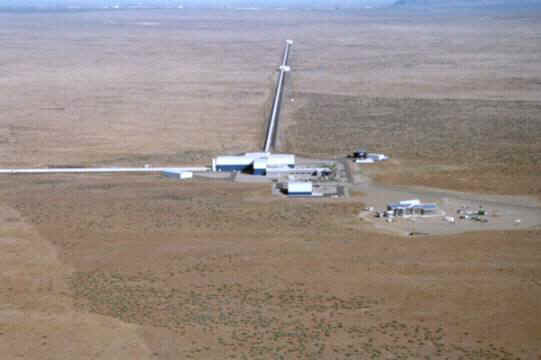
The
detector LIGO, located in Hanford
